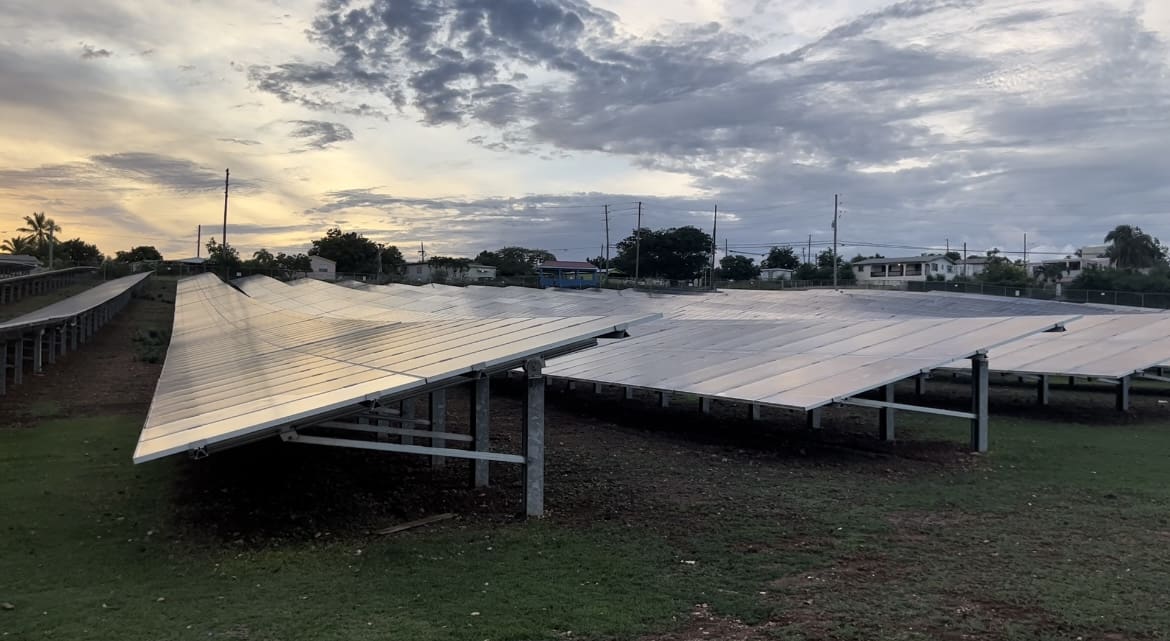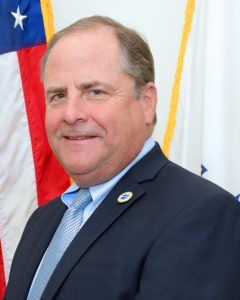
Editor’s Note: This article is the last in a four-part series looking at the the V.I. Water and Power Authority, its past failures and challenges, and its more recent efforts to build a more affordable, reliable and modern grid. Read Part 1 here, Part 2 here, and Part 3 here.
Two people who know best — Hugo Hodge and Lawrence Kupfer, both former WAPA chief executives — believe the future energy source in the Virgin Islands should be solar, with battery storage and perhaps wind backup.
It is universally accepted that renewable energy is necessary to combat climate change. Renewables have also become more economical sources of energy with the cost on a downward slide since 2000, according to a report by the International Renewable Energy Agency.
Wind and solar power are less expensive than fossil fuel generation in many situations, the 2019 report said. New wind and solar options “will increasingly undercut even the operating-only costs of existing coal-fired plants,” IRENA reported.
Hodge, WAPA CEO from 2008 to 2016, is now an energy consultant designing micro-grids. Through the work of his company, he keeps track of what is going on in the industry around the Caribbean and elsewhere.
Before Kupfer was WAPA chief executive from 2018 to 2021, he served as the HOVENSA Refinery president, a vice president at Hess Oil, and for three years was CEO/president of the Virgin Islands Next Generation Network.

Both men told the Source that solar power with battery storage is the best way to replace fossil fuel generation.
Hodge pointed out that solar components are small, unlike windmills, and easy to ship to the territory. The Virgin Islands has “very good sun,” he said. The plan should include a small hybrid system with gas as a backup, Hodge added.
One drawback Hodge pointed out is that only about 38 percent of the residents are homeowners and the rest — renters — are not going to invest in solar panels.

Kupfer agrees that solar and batteries work well for St. Thomas and especially for St. Croix, where there is more vacant land for grids. On St. Thomas and St. John, 30 megawatts could be placed on rooftops, he said, but how to dispose of used batteries is a big issue.
“Solar seems to be the best bet moving forward, combined with batteries. You only get about a 25 percent yield with solar panels because the sun only shines half the day. The battery technology seems to be developing,” Kupfer said. “You don’t have the wildlife impact you have with wind.”
Wind generation has been controversial — windmills are a known hazard to birds — but could work on the South Shore of St. Croix where there is usually a steady breeze.
Oceanic and tidal wave energy technologies haven’t been developed enough, Kupfer said, so that’s not a viable option for now.
“I don’t think they’re there yet,” he said.
Waste to energy is more for the waste management, Kupfer said, and reduces what is going to the landfill, which needs to be addressed in the territory. However, there’s not enough waste for a big operation, he added.
Kupfer said he is not familiar with the energy privatization project in Puerto Rico — whose grid was decimated by Hurricane Maria in 2017 and was hit again by Hurricane Fiona last September — and declined to comment. In 2021, LUMA Energy took over control of that territory’s power network, to very mixed reviews. Kupfer wondered how it is working given that the power demand is on the north shore of that island, but the facilities are on the south shore. He doesn’t think the Virgin Islands would do well privatizing the utility. The islands are relatively small and spread out and a large company couldn’t come in and share resources easily, he said.
Hodge doesn’t favor privatizing WAPA, either, because he thinks municipal ownership is best for the community.
“You have to serve all the customers and not just the ones who can afford it, but all,” he said.
Hodge reflected on WAPA’s continuing funding challenges.
“The main issue WAPA has had — before me and after me — is resources,” he said. “Right now is the first time there is actually funding.”
A primary drawback is that the largest customer is also the worst customer that doesn’t pay its bills in a timely manner. The utility can’t pay its own 30-day invoices without revenue from customers, he said.
“You can’t keep doing the same thing. You have to move in some different directions. If the biggest customer doesn’t pay their bill, you can’t maintain the system.”
Looking to the future, as the cost of alternative energy solutions decreases, interest rates will also go down and businesses and individuals will be more motivated to invest in power-saving programs.
“The worldwide weighted average cost of electricity from solar power concentration fell by 26 percent, that of bioenergy reduced by 14 percent, solar photovoltaic, geothermal, on- and off-shore wind fell by 14 percent and hydropower be 12 percent,” IRENA reported.
If true, the Virgin Islands government now should be able to discover the right energy fix for the islands. In the past, there has been much angst when lawmakers had to consider new sources of power. They hesitated to step off into the deep end to commit to a plan, until now.
In March, the WAPA board approved agreements for two wind and three solar projects to be completed in two or three years. According to Andrew Smith, WAPA’s current CEO, the projects will supply about one-third of the territory’s power needs.
In March, the Public Services Commission approved the Advance Powers agreements to supply 30-megawatts of wind power on St. Thomas and 15-20 megawatts on St. Croix. And, in April, the PSC approved 20-megawatt solar projects on St. Thomas and St. Croix and an 18-megawatt solar project on St. John.
Most of the islands in the Caribbean still rely on fuel oil, diesel, or natural gas — Sint Maarten and Trinidad and Tobago are still fully dependent on fossil fuel, according to the Republic Bank report in 2022.
Belize has the most diversified energy sources in the Caribbean, with 53 percent of its electricity provided by hydropower, the report said. Another 40 percent is bioenergy from organic materials, and solar energy accounts for six percent. Most of Belize’s power is supplied by local independent power producers.
Suriname is similar, with almost 47 percent hydro power, less than half of a percent solar and almost 53 percent fossil fuels.
Dominica is working up to 50 percent renewable energy, with 37 percent hydropower and diesel for most of their energy production. St. Vincent and the Grenadines’ system is 18 percent hydropower, two percent solar and 81 percent diesel.
The reality remains that although wind and sun are plentiful in the Caribbean region, resources are scarce for most countries and the territories to be able to afford, or implement, changes to their power grids.





